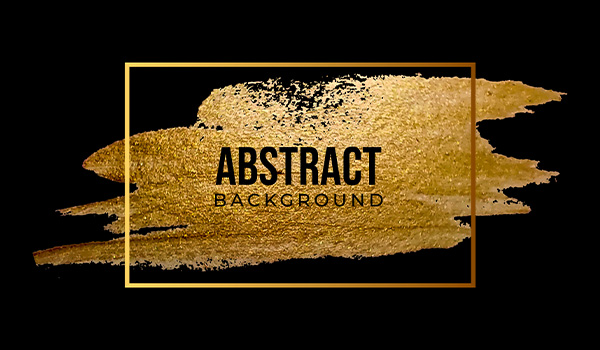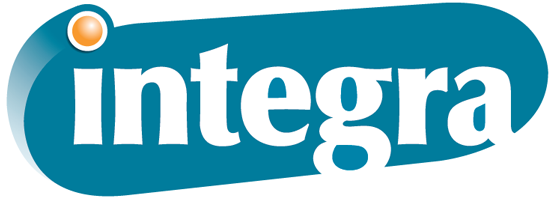Top 4 Types of Paper Embellishments for Printed Projects
December 16th, 2023 | 6 min read

In the world of print, the difference between a good project and a great one often lies in the details. Paper embellishments are a key player in this arena, adding depth, texture and visual interest to printed materials.
That said, we know figuring out those details can feel pretty overwhelming. You might be wondering whether you should add some type of embellishment to your print on paper project, and if so, what kind.
Here at Integra, we specialize in helping print buyers like yourself choose the best solutions for their specific needs. Step one of that decision-making process is knowing your options, which is exactly what we’re here to discuss.
In this post, we’ll help you understand what each embellishment does to the paper, how each option works, the benefits and limitations involved and what you should keep in mind regarding cost. The top four embellishments you may want to consider adding to your next printed project include:
- Emboss and deboss
- Foil stamps
- UV spots
- Die cut paper
If you're looking to enhance a business card, catalog or promotional material, understanding the nuances of these embellishments can transform your printed projects. More importantly, knowing about each solution can help you decide whether embellishments are worth the extra work and expense.
Whether you choose to go all out on the most intense contrasts and the fanciest features, or you opt out for the current project altogether, you’ll be able to do so with the confidence that you knew about all the embellishment options available to you after reading this piece. So let’s dive in!
Top Paper Embellishment #1: Embossing and Debossing
First up on your list of options are embossing and debossing, both of which create a premium tactile and visual experience. So first, what do the terms mean?
What Are Embossing and Debossing?
Embossing and debossing are techniques that create a three-dimensional effect on paper. Embossing raises the paper surface, creating a “bumpy” texture in the chosen design.
Debossing is the exact opposite, pressing down and compressing the paper fibers to create an indented impression.
How These Methods Work
This technique involves a custom-made die and counter-die that press into the paper, molding it into the desired design. The process requires precision and a keen eye for detail to ensure the perfect depth and clarity.
Benefits and Limitations
The primary advantage of embossing and debossing is the sophisticated, high-end look and novel feel they bring to a project. Each one adds an element of refinement and can be a game-changer for branding elements like logos and taglines.
The option you choose between embossing and debossing is entirely based on aesthetic preference — which looks and feels the best to you? Consider requesting physical samples from your printer if you’re not sure.
This process, while popular in many projects, is not without its limitations. Thinner papers may not hold the embossed or debossed designs well, and highly intricate patterns, while possible, can be challenging to execute.
Pricing Considerations
The first factor influencing cost within this category is the custom die you’ll need made for your specific design. These dies can be costly depending on design size and complexity, but they can fortunately be reused, offering value in long-term or repeated projects.
Other factors include paper type, size of your print run and number of spots being embossed or debossed, since multiple locations will require multiple runs through the equipment.
Top Paper Embellishment #2: Foil Stamping
Next on the list: The widely popular and sophisticated foil stamping.
What Is Foil Stamping?
Foil stamping is the application of metallic or pigmented foil onto paper. This technique is known for its shiny, eye-catching effect that can add a luxurious feel to any project.
The Process
With a heated die matching the chosen design, the foil is pressed and bonded onto the surface of the paper. This embellishment can be combined with embossing for an even more dramatic effect.
Impact and Limitations
Foil stamping is incredibly versatile and can be used to enhance not just text but also graphics and other design elements. Its reflective quality catches the eye, making it an excellent choice for high-impact areas. However, it is generally more costly than standard printing techniques and might not be suitable for highly detailed or large solid designs.
Cost Factors
The price is determined by the complexity of the design, the type of foil used, and the size of the stamped area. Specialty foils can add to the cost but also contribute to a more unique and customized look.
Need to know whether you'll have extra time in your print schedule before you decide if you want embellishments? Check out our timeline calculator below for an estimated time frame for your project.
Top Paper Embellishment #3: Spot UV
Spot UV is a popular and more modern approach to embellishments. If you’ve read our article on the best paper finishes, you already know about flood UV. Spot UV is a more specialized option that adds emphasis rather than full coverage.
Let’s cover what you need to know.
Understanding Spot UV Embellishments
Spot UV is a technique where a high-gloss UV coating is applied to specific areas of the printed material, creating a glossy effect that contrasts with the area’s background.
The Process
It involves applying a UV-cured varnish to selected areas, which is then hardened under ultraviolet light. This selective application allows for precise control over which areas of the design are highlighted.
Strengths and Limitations
UV spot is excellent for drawing attention to certain elements, like logos or special messages. It subtly elevates the overall design without overpowering it.
This option does come with some inherent limitations, most notably that it won’t be as effective on a “busy” background with lots of colors or complex designs. This technique excels the most paired with more neutral, less oversaturated designs, providing emphasis exactly where you want emphasis.
You wouldn’t want to pay for spot UV on a business card or postcard if it’s barely noticeable, so make sure you keep your printed work’s design in mind as you make your decision on whether this solution is the right fit for your project.
Pricing Dynamics
The cost of a spot UV application is influenced by the coverage area and the complexity of the application. Larger or more intricate designs can increase the price, as can multiple impressions or impressions across multiple pages.
One major limitation for this type of embellishment is that it takes a make-ready process — in other words, test runs — to get the spot precisely where it needs to be. As a result, some businesses find that it’s a cost-prohibitive option for small batches.
Note: Check with your printer to determine whether they have in-house spot UV capabilities or would need to outsource the work, which could affect your pricing.
Top Paper Embellishment #4: Paper Die Cutting
Another popular and versatile embellishment that can help you customize your print project is paper die cutting. Here's what you should know to get started.
Exploring Die Cutting Techniques
Die cutting is the process of cutting paper into specific shapes using a sharp steel blade. This technique allows for a high level of customization and can create intricate, unique designs.
Adding Dimension
Die cutting can introduce interactive elements like pop-ups or create custom shapes that add an element of surprise and engagement to your project. It's particularly effective in marketing materials, invitations and packaging.
Capabilities and Challenges
Die cutting offers a high degree of customization and can give you nearly infinite design options. Some businesses choose a die cut on the cover of a booklet to allow an element on the second page to show through. Others choose a shape and incorporate it across all pages. Still others give a unique edge to their pages or select a shape for an entire postcard.
Note: Your printer may have access to some standard die cutting molds. If you plan to embellish a basic shape and size on your work, ask if any of their pre-made molds could be a good fit for the project.
Die cutting may not be your best option if you’re working with thin paper. Speak with your printer to find the best choices for you.
Cost Factors
The cost of die cutting is affected by the complexity and size of the design, the type of paper used and the size of the production run. As is the case with the other methods, a custom die will be made for your project, which will require a higher first-time investment but provide lower-cost reapplication for future projects.
Which Embellishment Will Give Your Print Design the Best Presentation?
So there you have it — four high-class embellishments that can give any print project that extra bit of beauty and glamor or sophistication and appeal. You may not have known the ins and outs of these embellishments when you first came here, but now you should be better positioned to make the right call for your needs, whether that’s lots of embellishment, a just-right application or no extras at all.
If you’re in the early stages of planning a print project and trying to get lots of research under your belt before contacting a print provider, check out our blog post on the best paper types for various print projects. You’ll want to select your paper type and finish along with your embellishments so that the overall design makes sense for your budget, timeline and aesthetic goals.
Are you hoping to find a print professional who can answer further paper- and print-related questions for your project? Maybe you had a lightbulb moment and already know which embellishments are a great fit for your needs, and now you just want to execute the plan. No matter what stage of the printing process you’re in, the experts at Integra would be happy to help.
Click below to get started and discuss your project with our team.
Topics:



